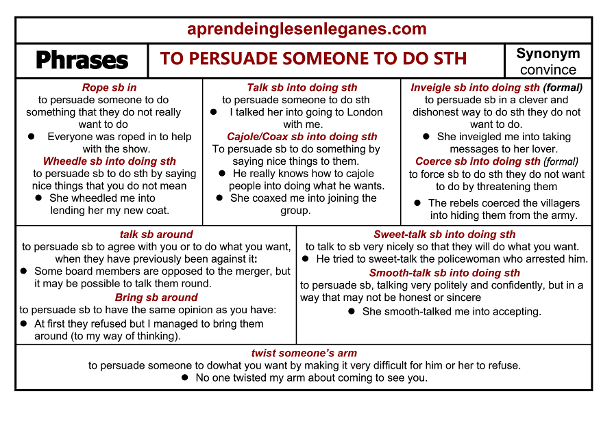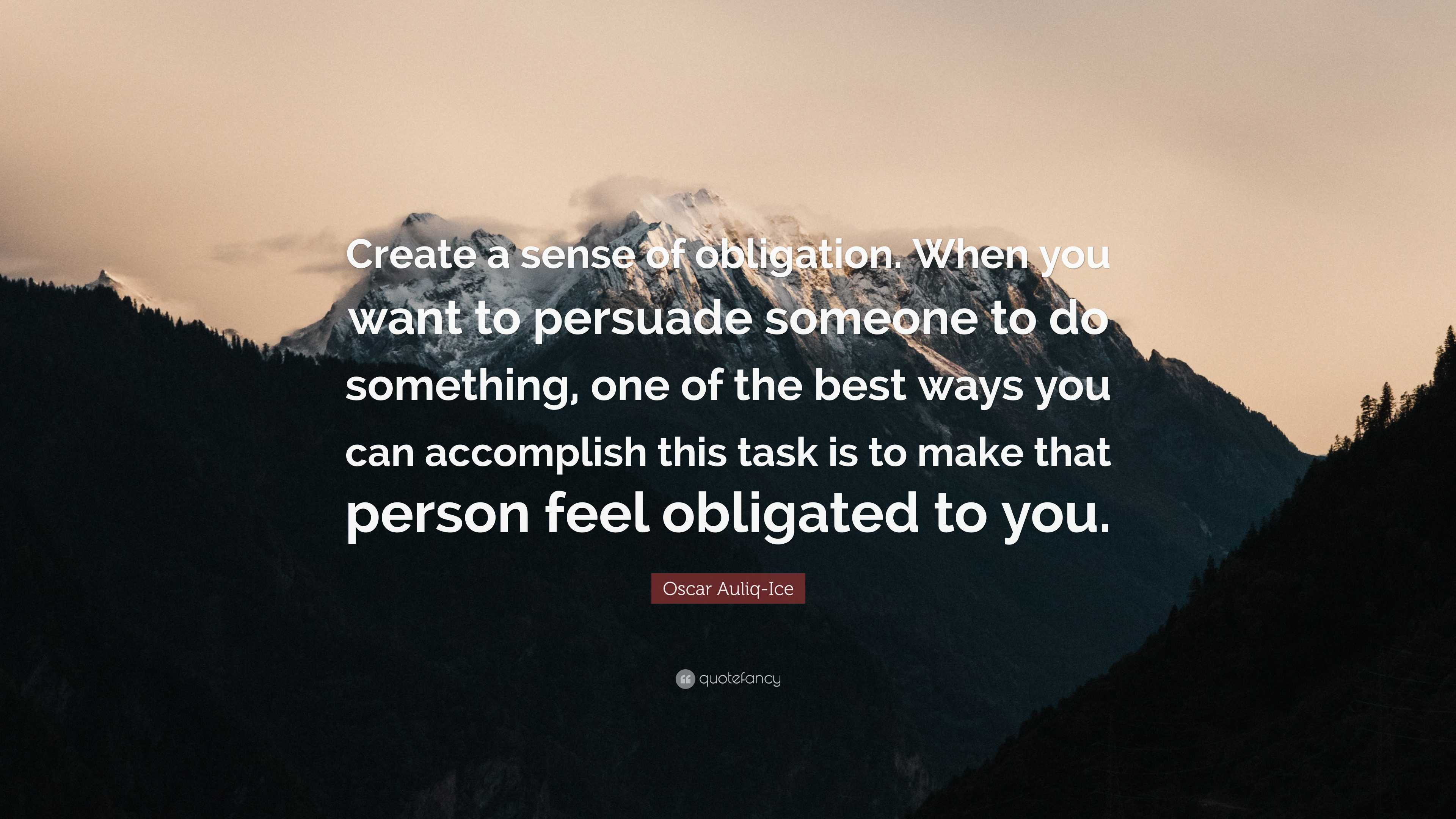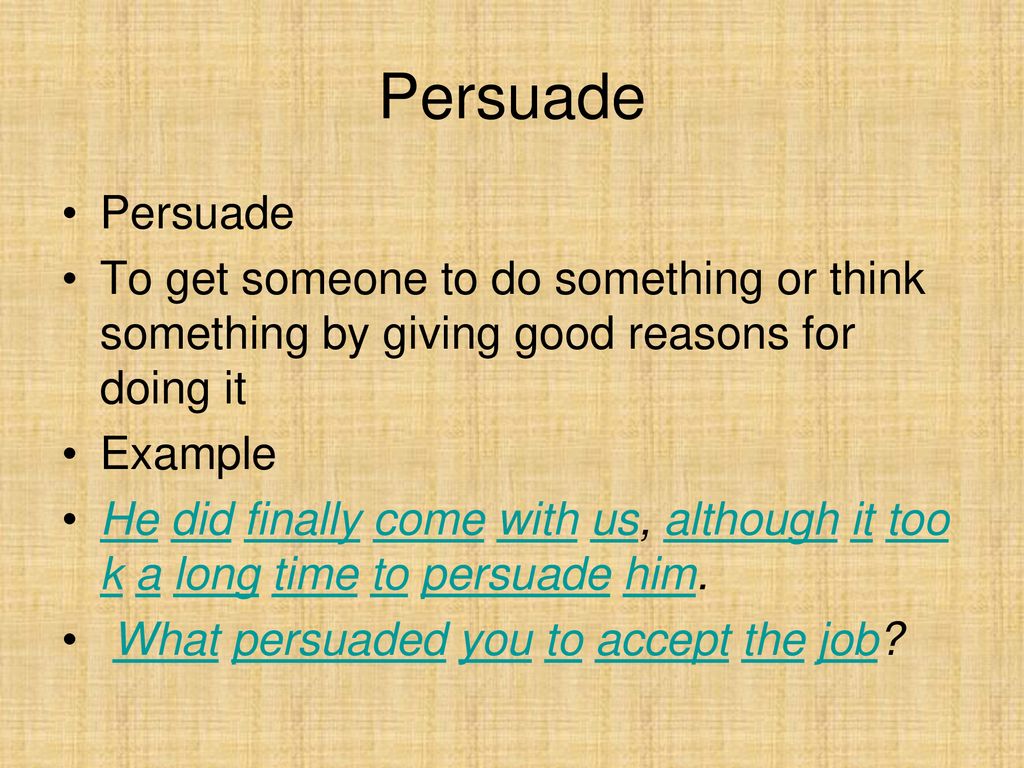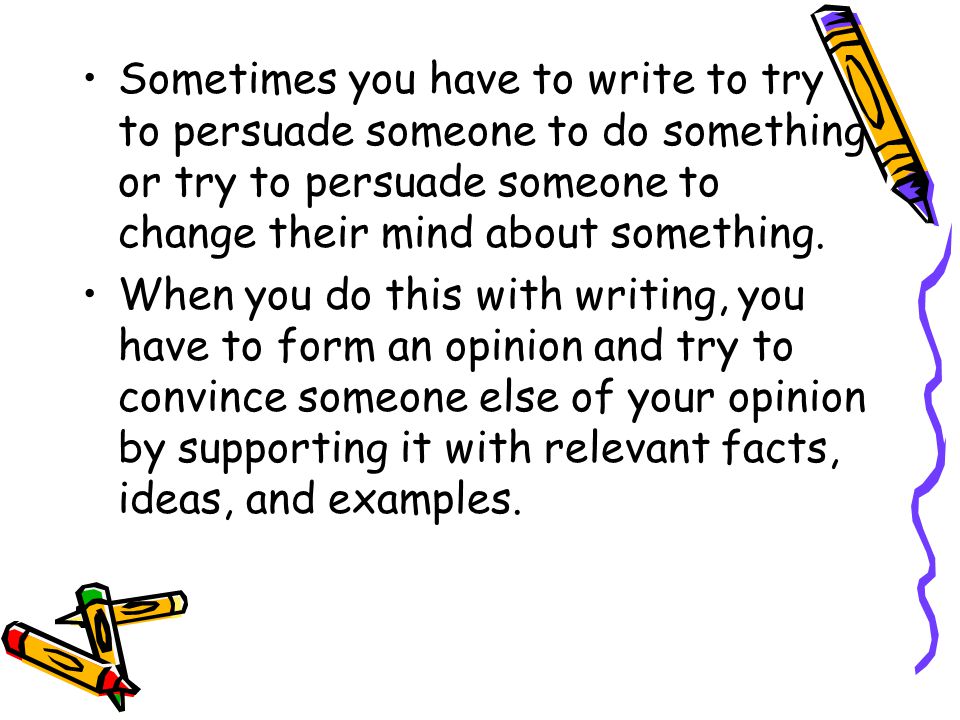Best Way To Convince Someone To Do Something

Ever felt like you're pushing a boulder uphill trying to get someone to see things your way? You're not alone.
This guide is for the everyday person – the parent trying to get their child to eat vegetables, the colleague pitching a new idea, or the friend trying to organize a weekend getaway.
We'll explore the art and science of persuasion, not through manipulation, but through understanding, empathy, and clear communication. Consider persuasion as building a bridge, not erecting a wall.
Understanding the Landscape of Influence
Persuasion isn't about trickery; it's about understanding motivations. It’s about connecting your goals with the other person's needs and desires.
Think of it as collaborative problem-solving, where both parties benefit.
The Psychology Behind "Yes"
Several key psychological principles underpin effective persuasion. Understanding these principles empowers you to craft more compelling arguments.
Reciprocity, for example, suggests that people are more likely to comply with a request if you've previously done something for them.
Scarcity makes things more desirable when they are perceived as limited or exclusive.
Authority implies people tend to obey authority figures, even if their requests are questionable.
Consistency means people like to be consistent with their past actions or statements. Lastly, Liking implies people are more easily persuaded by people they like.
Comparing Persuasion Techniques
Different situations call for different approaches. Here's a comparison of some commonly used persuasion techniques:
| Technique | Description | Pros | Cons |
|---|---|---|---|
| Rational Argument | Presenting logical reasons and evidence. | Effective with analytical individuals, builds trust. | Can be ineffective with emotionally driven people, requires strong evidence. |
| Emotional Appeal | Connecting with someone's feelings and values. | Highly persuasive when used ethically, can create strong connections. | Can be seen as manipulative if insincere, may not appeal to everyone. |
| Collaboration | Working together to find a mutually beneficial solution. | Builds strong relationships, increases buy-in. | Requires time and willingness to compromise, may not be suitable for all situations. |
| Storytelling | Using narratives to illustrate a point and create an emotional connection. | Memorable and engaging, can simplify complex ideas. | Can be time-consuming to craft, may not be suitable for all audiences. |
| The "Foot-in-the-Door" Technique | Starting with a small request and gradually escalating to a larger one. | Increases the likelihood of compliance with the larger request. | Can be seen as manipulative if overused, requires careful planning. |
In-Depth Technique Reviews
Rational Argument: The Power of Logic
This technique relies on presenting clear, logical reasons and supporting evidence. Back up your claims with facts, data, and credible sources.
Anticipate counterarguments and address them proactively. Show them you understand their concerns.
Emotional Appeal: Connecting on a Deeper Level
Emotional appeals tap into someone's values, fears, hopes, and dreams. Frame your request in a way that resonates with their emotions.
Be authentic and genuine in your approach. Empathy goes a long way.
Collaboration: The Art of Compromise
Collaboration involves working together to find a mutually beneficial solution. Listen actively to their perspective and show a willingness to compromise.
Brainstorming solutions together can lead to unexpected and innovative outcomes. Make them feel as though they are apart of the decision.
Storytelling: Weaving a Compelling Narrative
Stories are powerful tools for persuasion. They can simplify complex ideas and create an emotional connection with your audience.
Use vivid language, relatable characters, and a clear message. Practice your storytelling to make it seamless.
The "Foot-in-the-Door" Technique: Gradual Influence
This technique involves starting with a small, easily accepted request and gradually escalating to a larger one. Securing the initial "yes" makes it more likely they'll agree to the bigger ask.
Make sure the initial request is genuine and not just a manipulative tactic. This helps keep up your image as someone who can be trusted.
When to Use What: A Practical Guide
The best persuasion technique depends on the situation and the individual. Here are some general guidelines:
Use rational arguments when dealing with analytical individuals or when presenting complex information.
Use emotional appeals when connecting with someone's values or when motivating them to take action. Collaboration is ideal when building long-term relationships or when seeking creative solutions.
Storytelling works well for simplifying complex ideas or creating an emotional connection with a large audience.
The "foot-in-the-door" technique can be effective when you need to gain compliance with a larger request over time.
Reliability Ratings by Persuasion Technique (Ethical Considerations)
The "reliability" of a persuasion technique isn't about whether it *works*, but whether it can be used consistently and ethically without damaging relationships.
- Collaboration: Excellent. Built on mutual respect and understanding.
- Rational Argument: Very Good. Relies on facts, fostering trust.
- Storytelling: Good. Can be highly effective, but needs authenticity.
- Emotional Appeal: Fair. Risky if not genuine, can be manipulative.
- Foot-in-the-Door: Poor. Can easily be seen as manipulative if overused.
Checklist: 5 Must-Consider Factors Before Attempting to Persuade
- Understand Their Perspective: What are their needs, values, and concerns?
- Establish Credibility: Why should they trust you?
- Craft a Clear Message: What are you asking them to do, and why?
- Build a Connection: Find common ground and show empathy.
- Be Prepared to Compromise: Are you willing to negotiate?
Key Takeaways
Persuasion is a skill, not a dark art. Effective persuasion requires understanding, empathy, and clear communication.
Choose the right technique for the situation and the individual. Always strive for ethical and mutually beneficial outcomes.
Remember that building trust and fostering relationships is essential for long-term success. Practice active listening to truly get to know the person you are speaking with.
Ready to Become a Master Persuader?
Start by practicing these techniques in low-stakes situations. Reflect on what works and what doesn't.
Consider taking a course or reading a book on communication and persuasion. Embrace the journey of continuous learning and growth.
Now, go out there and put these principles into practice! Start building bridges and achieving your goals, one conversation at a time. Begin by asking yourself, "what do I want to achieve and what are some ethical routes to achieve that?".


















